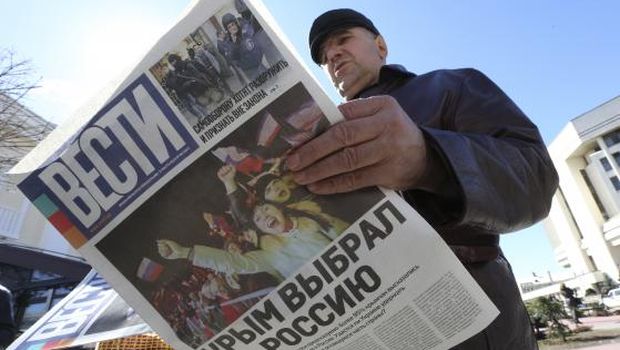During a news conference following his meeting in Cairo on Sunday with Egyptian President Abdel-Fattah El-Sisi, Sudanese President Omar Al-Bashir—who appears to have some sort of gripe with the media—said: “In the past, we used to say that people followed the religion of their leaders, but in this day and age we see that people follow the religion of their media.” He then went on to say that the relationship between the two countries would not be affected by whatever was currently being said in the media, and that nothing would be able to shake it, no matter what was being said.
Without going into detail regarding the relationship between the Sudanese president and his country’s, or anyone else’s, media, we can see that he is certainly not alone among world leaders in taking issue with the media. This phenomenon is not confined to one geographical area, but can be seen in different parts of the world in different degrees according to the degree of personal freedom and the level of social development in each country.
“Newspaper talk” was a widespread phrase in Egypt, used whenever someone wanted to dismiss a less-than-credible report, and, of course, there must be a reason for this. Newspapers used to be the primary means of spreading and circulating news. But just like in any other profession, you will find examples of the dilettante who doesn’t care about accuracy or objectivity, and the solid, professional practitioner who safeguards their respectability and is committed to objective reporting. Nowadays, TV and satellite channels have entered into the fray, followed by the genie in the bottle that is social media—still developing and in its infancy—which has turned us all into news reporters, journalists and columnists, broadcasting our content in the form of words, pictures, and sometimes even video.
The media has never been as influential and important in shaping public opinion and enjoying a mutual interaction with it as it is now. Its scope has widened dramatically with the rapid spread of information and images throughout the corners of the globe—almost as soon as a story breaks in some cases—and has resulted in some very positive developments in terms of the amount of information being broadcast and circulated. Alongside this, however, are some very critical challenges related to the spread of false information and scaremongering based on bogus information, or alarmism derived from taking a news story out of its proper context, in addition to the ease with which some truths can be bent, all of which has created a very difficult environment for the media.
Prime examples of this include the case of Wikileaks and the Edward Snowden files, which both spread like wildfire all over cyberspace within a very short time, causing untold diplomatic embarrassment, without anyone being able to be stop it. If anyone had tried to spread these leaks in the usual way, it would have taken them months to do so; they would have also needed numerous vehicles to transport the multitude of documents and many years to go through all of them properly. Another example of how false information can quickly spread and have swift repercussions, even before anyone has the chance to check its authenticity, was the recent cyber-attack on a prominent news agency which produced a false report saying US President Barack Obama had been attacked—which almost instantaneously sent financial markets into freefall, with tens of billions of dollars wiped off the value of shares, before everyone realized what had happened and the markets stabilized again.
Needless to say, the examples are numerous and sometimes resemble cases of “friendly fire” in armed conflicts—not meant to harm but which nonetheless do so due to hastiness or a lack of accuracy. Very often at other times the media itself is in the crosshairs over its use in its various forms, particularly online. Terrorist organizations very early on adopted some of the new media forms and techniques in order to spread their poisonous propaganda and promote themselves online, spreading their message in ways not previously open to them. It is clear that the use of the media is a substantial part of these groups’ strategies, for without it the videos of executions and slaughter and takfir (declaring others infidels) would not have had the effect that they are having now—since no-one would have been able to see them, especially considering how difficult it would be for these groups to develop their own (traditional) media outlets. It is often said that a not-insignificant part of wars and conflicts fought this century will rely markedly on the media and on directing and controlling public opinion.
The emergence of media outlets and methods of communication of this size and scope is historically unprecedented. This is a phenomenon that carries with it both massive positive potential and massive challenges. A commonly held view now, however, is that the relationship between the media and the public in the modern age involves two-way traffic, and this will help to filter out those outlets and sources that are to be trusted from those that cannot, in a near-mechanical process. But there is no ready-made recipe for taking this mutual relationship to more refined heights, because it is actually a part of the social development process of a given society, into which many factors—such as education and economic and political growth and development—enter, all of which affect the quality of the information exchange process.

Trackbacks/Pingbacks